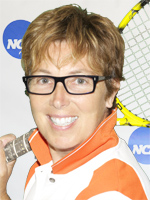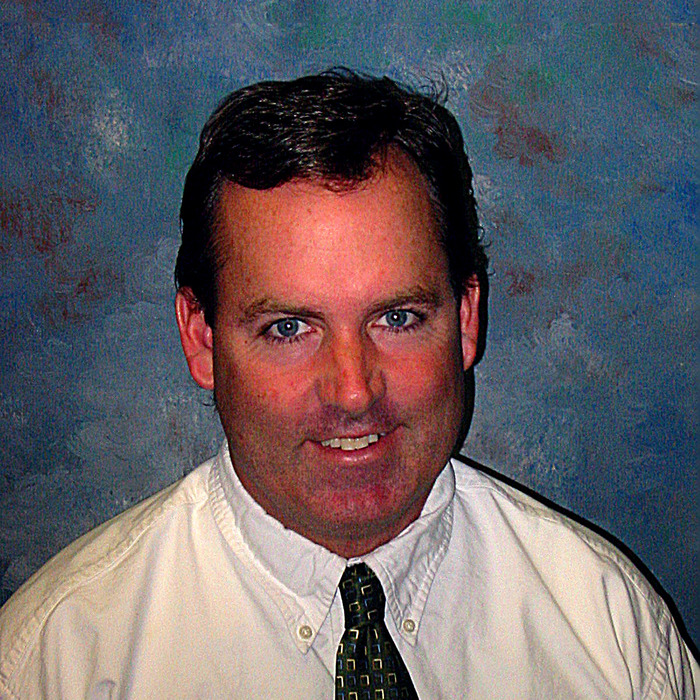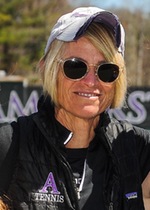So far in our competitiveness series we’ve taken a look at the rankings over the past 20 years, had a blogger roundtable, and made some sweet tables in an attempt to quantify the level of competitiveness this year versus previous years. This week we turn the microphone over to the coaches, who have a front row seat to all the madness and offer different perspectives on competitiveness and the D3 landscape. This will be the first of two coaches perspectives articles, with this one focusing on the increased competitiveness in D3 this year and our next one focusing on what coaches look for in competitive recruits! We reached out to 11 coaches around the country and they were kind enough to offer their thoughts. Let’s meet our panel of coaches:
Coach Jackie Bagwell – Amherst – Coach Bagwell is in her 28th season as head coach. She has coached NCAA Champion teams and taken Amherst to the NCAA quarterfinals in 21 of the last 22 seasons.
Coach Kathy Campbell – Vassar – Coach Campbell has been at Vassar since at least 1988. Since then, her teams have been ranked in the top 15 in the Northeast and nationally ranked for over 20 years. In her tenure, the Brewers have qualified for NCAAs 10 times by winning the Liberty League title.
Coach Mike Fried – Wesleyan – Coach Fried is in his 7th season as head coach of men’s and women’s programs. He has guided the Cardinals to the national scene, and as we have seen they are consistently ranked in the top 10. Wesleyan just won the NESCAC tournament.
Coach Kate Bayard – Tufts – Coach Bayard is in her 14th year as head coach. Under her guidance, Tuft’s women’s tennis has made 12 NCAA appearances (soon to be 13) and has consistently been in the Top 10, including a highest position of #3 in 2017.
Coach Jon Carlson – Gustavus Adolphus College – Coach Carlson is in his 29th season as head coach. Under his guidance GAC has won the MIAC title 24 times. Back in 1990, Coach Carlson led his squad to the NCAA National Title.
Coach Amy Bryant – Emory – Coach Bryant is in her 19th season as head coach, with 18 appearances in the NCAA national quarterfinals and 12 appearances in the finals. Her team has won the NCAA championship 6 times.
Coach Erin Ness – Washington and Lee – Coach Ness is in her 7th year as head women’s tennis coach. She has won the ODAC conference all 7 years of coaching and has made at least the NCAA Second round every year.
Coach Art Canizares – Mary Washington – currently in his first year as the interim head coach at Mary Washington, Coach Canizares had been assistant coach for 13 years before that. During his tenure the eagles have made the NCAA Tournament every year by capturing the CAC Championship.
Coach Conchie Shackelford – Sewanee – Coach Shackelford is in her 33rd season as head coach. She has won 12 SAA conference championships with 25 NCAA tournament appearances. She has produced 9 top-10 year end rankings and 19 top-15 year end rankings.
Coach Billy Porter – Southwestern—Coach Porter is in his 6th season as head coach of men’s and women’s programs. He led the women’s program to it’s highest ever ranking of #23 nationally in 2018, only to beat it this year with a program high of #21 nationally.
Coach Mandy Gamble – Caltech – Coach Gamble is in her 17th season as head coach for Caltech. This year the team has seen an unprecedented rise in rankings, achieving it’s highest ever ranking of #20 nationally.
OK, now that we’ve established that these coaches know what they’re talking about, let’s see what they had to say below.
How do you view the current landscape and trajectory of D3 women’s tennis?

Coach Bryant (Emory): The teams are all really talented from top to bottom. And, we have some really strong, established coaches and programs competing against one another!

Coach Canizares (Mary Washington): Junior tennis players are seeing that D3 tennis is a viable option even for 5-star players now. The process started a few years back, and with Eudice Chong showing you can play D3 and still have the pro tour as an option the floodgates have been opened. In the past, the top 3 or 4 ranked tennis schools were able to hoard all the upper-level talent that would consider playing D3, but now that so many more upper-level talent is considering D3 they are looking to play where they can get an excellent education while also playing a national tennis schedule. It is no coincidence that the highest ranked tennis schools are also some of the best academic schools in the country at any level, many being well-known not only at a national level but globally as well. I’m sure you have run into many people who are surprised to learn that schools such as Emory, Johns Hopkins and MIT are D3 schools since people around the world are aware of them for their stellar academic reputations. As high-quality players see more players they have competed against in juniors are going D3, they will hopefully no longer see D3 as a lesser version of D1.

Coach Ness (W&L): The level of D3 women’s tennis has been continuously growing over the past 10 years. All-Americans I had at UCSC may not have achieved that status if they competed now. More high level players are seeing D3 as a viable option to play at a competitive level (similar to lower to mid-level D1) and get a great education at some of the best academic schools in the country. It’s not a coincidence you see that most of the best academic schools are also the top programs in the country. The overall balance between academics, athletics, and social are a major draw for Division 3, and more players are looking for a well-rounded college experience where they can do internships, study abroad, and be involved in other organizations across campus.

Coach Shackelford (Sewanee): The parity we are seeing this year among the top teams has actually been developing over the past two decades. Once the NCAA began to use the automatic qualifier for conference champions, college presidents and athletic directors began hiring more full time and better qualified coaches and building top notch facilities across the country. This has slowly led to much stronger recruiting classes including many of the country’s highest ranked juniors who recognize the benefits of a college education combined with highly competitive tennis at one of the nation’s top academic schools. Coaches like Amy Bryant of Emory and Allison Swain, formerly of Williams built programs that were the envy of schools across our division. Imitation is the greatest form of flattery and many of us have attempted to adopt similar methods of practice, recruiting, and scheduling. The sport has continued to evolve with the addition of coaches like Davis Schwarz of Claremont who previously won national titles on the men’s side and was also a division I men’s coach in the Ivy League. There are simply more talented players in this era and more hard working coaches creating positive environments that are conducive to championship experiences for many student-athletes.
What is your take on the increased parity between teams on the national level this year?

Coach Porter (Southwestern): Great question and the simple answer is recruiting. While the elite programs are still getting the best players for the most part, the next tier of programs has been able to demonstrate the ability to land the talent with those elite programs with that gap closing. Development is obviously a key component of the parity and believe that there an enormous amount of great coaches out there squeezing the most out of their players.

Coach Bayard (Tufts): It has been exciting this season to see parity among so many more teams than ever before. Some of the big leaps from year to year are definitely helped by strong recruiting classes (doesn’t have to be big class – 1 player who’s unbeatable at the top can make huge difference). Besides the obvious recruiting factor, fitness and a doubles focus both can make a huge difference and can help teams make those bigger leaps.
Coach Canizares (Mary Washington): As for the parity on the national scale, a lot of schools graduated excellent classes that have carried their teams for years. No matter how talented incoming freshmen are, there is a lot to be said for having experience of having been there and knowing what it takes to be successful at college tennis. The pressures of playing for your team and not just yourself are hard to define and effect players in different ways until they have had the experience often enough to be second nature.

Coach Campbell (Vassar): I think there are more upsets and movement with the rankings now because more and more top rated players are electing Division III. It used to be that the very top D.III programs were able to attract a few top rate recruits yearly and consistently from year-to-year. Now, more and more people (student-athletes, teaching pros/junior coaches, parents) better understand and embrace the benefits of playing D. III tennis at top academic schools and generally smaller schools that match the recruit’s academic interests and are proactively seeking D.III. Therefore, more D.III programs are attracting and yielding more elite players, so there is more strength and depth in more D. III programs.
Why is The Blog the best thing to ever happen to D3 tennis?

Coach Gamble (Caltech): This year is more competitive because the talent pool has diversified. Now, the top 50 schools in the nation are vying for the same recruits, who in years past tended to look at schools in the top 10. Our tennis community is enjoying the snowball effect from social media promotion through outlets like Twitter, Instagram and blogs, as well as TRN & the ITA that give more programs more visibility. This buzz is contagious and D3 is experiencing the dividends of more talent coming into our division as a wider audience now sees the wonderful experience being a D3 tennis student-athlete is.
Jokes aside, D3 women’s tennis is a game of tiers – you have your top 5 programs, your 6-12 programs, the 15-20 programs. The numbers don’t have to be precise but generally teams stick to the same tier over the years. As a coach who has made big jumps in tiers during your tenure, what does it take? What’s the difference between being a Top 10 program and a 20-30 ranked program?

Coach Carlson (GAC): Things have changed over the years. In the past, you could make a legitimate run if you had players who, through development within the program, could reach the level of a mid-major Division I tennis player. Now, you need to bring in players that could play at the Division I level coming in; but get them to choose Division III. The more players like that you can bring in, the better chance you have of making a run at a title. The developmental players are now in the second tier of teams. This year, there is a blurring of the second and third tier of teams. Intangibles (effort, team spirit, toughness in competition, etc…) have been the divider between teams’ 11-40+. Lots of close matches. While I will take as many Division I level players as I can get, I do enjoy the fun and challenge of taking a junior player with potential, and helping them grow their game to accomplish things they didn’t think they could do in the game of tennis.

Coach Fried (Wesleyan): As we’re seeing this year on both the women’s and men’s sides, the parity is pretty amazing (and a little stressful)! At the same time, there does indeed generally seem to be some “tiering” through the rankings. I think the main differences among the tiers may be attributed to a few things – among them recruiting, team culture, and internal leadership. In order to achieve at the highest level, I think recruiting needs to be competitive with the best teams in the country; team culture has to be committed to excellence and player/person development; and the team leaders need to be modeling the standards of the culture and holding teammates accountable to them. To make the jump from one tier to the next, it realistically takes a tangible ramping up in one (and ideally all) of those areas.

Coach Bagwell (Amherst): a. Staying healthy-doesn’t matter how good your players are if they are injured. b. Doubles up 2-1 and 3-0 consistently really helps c. Depth in the line up, good teams have a few good players, great teams can get wins from everyone in the line-up.
There you have it, straight from the mouths of the experts. It seems like a few common threads emerged – D3 tennis is becoming more and more attractive as the level of tennis becomes higher and the academic opportunities remain bountiful. Recruiting more talented players, team culture, staying healthy (I’m so glad Coach Bagwell brought that up), and player development have all been big contributors to increased success at all levels of D3 tennis. This increased parity has been years in the making, as schools are taking tennis more seriously and dedicating resources to developing their teams.
Thank you so much to all of our coach contributors! They’ll be back soon to share their perspectives on recruiting.